What to visit in Andalusia
To say that Andalusia stole my heart is an understatement. It made me love Spain more than Italy — and that’s a major statement coming from me. Andalusia travel has everything: flamenco, whitewashed villages cascading down rugged hills, orange trees decorating every plaza, beautiful beaches, exquisite Andalusian food, and over 300 days of sunshine each year. I’ve already been twice, and I plan to return every year now that my parents have decided to become snowbirds in southern Spain. Here you’ll find a collection of the best cities to visit in Andalusia, along with a hand-picked selection of picturesque towns to get you daydreaming about your next vacation — even during that boring work meeting.
A Little About Andalusia
Andalusia, or Andalucía in Spanish, is the southernmost region of Spain, bordered by the Mediterranean Sea to the south and the Atlantic Ocean to the west. This region of southern Spain boasts more than 800 km of coastline — from the famous Costa del Sol to the wilder Costa de la Luz — and countless hidden coves and small beaches. It’s made up of eight provinces: Almería, Cádiz, Córdoba, Granada, Huelva, Jaén, Málaga, and Seville. (If you’re Canadian, it can get confusing — Spain’s autonomous regions are like our provinces, and their provinces are more like our regions.)
Andalusia’s history is a rich tapestry shaped by centuries of cultural crossroads. Once part of Al-Andalus after Muslim forces arrived in 711 AD, the region still bears the imprint of its Moorish, Roman, and Jewish past. The Christian Reconquista ended Muslim rule in 1492 with the fall of Granada, marking the start of Spain’s Age of Exploration. Today, Andalusia’s diverse influences live on through its architecture, traditions, and cuisine, creating a region unlike anywhere else in Spain.
So what are the must-visit places in Andalusia? Or maybe you are looking for things to do in Andalucia? Well, you have come to the right place! This article is a combination of my favourite stops, along with the help of other travel writers! I’ve broken down the article per province; they are not in any particular order.
PIN IT FOR LATER!
Malaga
Marbella
When most people think of Marbella, they think of trendy beach clubs, designer shops, and luxury yachts — and yes, it absolutely has that side in Puerto Banús. But if you wander beyond this area, you’ll find a town with so much more personality and charm. Trust me on this one!
Start with Marbella’s Old Town (Casco Antiguo), a delightful maze of narrow cobbled streets, whitewashed houses draped in bougainvillea, and hidden squares where locals linger over coffee. The heart of it all is the Plaza de los Naranjos (Orange Square), where you will need to indulge in freshly made churros.
If you’re tempted by the other side of Marbella, Puerto Banús is where the luxury yachts dock and the nightlife buzzes. It’s glitzy, loud, and fake, think Miami vibes on the Mediterranean. To be honest, you can skip. I visited and wanted to leave immediately.
Instead, take a walk along Marbella’s seaside promenade (Paseo Marítimo) that stretches for km, perfect for an early morning run or a sunset stroll. Don’t miss Alameda Park, a leafy oasis filled with tiled benches and fountains, and if you like to hike, then La Concha is for you. It is the mountain that towers over Marbella. The views from the top are beautiful, the Mediterranean on one side, the rugged Sierra Blanca on the other.
Nerja
Nerja is one of those coastal towns that perfectly captures the laid-back spirit of southern Spain. It is one of the best places to visit in Andalucia in winter due to its mild temperatures year-round. Nestled along the Costa del Sol, it’s a mix of Mediterranean beauty and small-town charm. With its whitewashed streets, turquoise waters, and mountain backdrop, Nerja is a must-visit town in Andalusia! And it is one of my favourite towns.
The star of the show is the Balcony of Europe (Balcón de Europa), a wide, palm-lined promenade perched on a cliff, offering panoramic views of the turquoise sea and rugged coastline. It’s the kind of spot where you’ll find both locals chatting over ice cream. From here, you can easily wander down to Playa de Calahonda or Playa Burriana, two of the town’s most beloved beaches, for a swim or a long lunch of grilled sardines right on the sand.
Just outside the town, the Nerja Caves (Cuevas de Nerja) are an absolute must. These vast caverns, discovered by chance in 1959, stretch for almost five kilometres and contain some of the world’s oldest cave paintings. The main chamber even hosts concerts thanks to its natural acoustics, so I would suggest checking if there are shows during your stay in Andalusia.
Ronda
You have seen Ronda on your Windows screensaver without knowing it, and yes, it is just as beautiful. Ronda showcases the best of Andalucia as the town sits dramatically atop El Tajo Gorge, a 120-metre-deep chasm that splits Ronda in two, connected by the iconic Puente Nuevo bridge. Walking across it feels like stepping straight into a postcard, for real.
Ronda’s history is fascinating. Founded by the Celts, expanded by the Romans, and later transformed under Moorish rule, the city is a living timeline of Andalusia’s layered past. You can still see traces of this history in the Arab Baths (Baños Árabes) — some of the best-preserved in Spain — and in the narrow lanes of the old Moorish quarter, La Ciudad. The city also boasts one of the oldest bullrings in Spain, the Plaza de Toros, built in the 18th century and now home to a museum that explores the tradition’s cultural significance. For the Moorish architecture lovers, Ronda should be on your list.
But beyond the monuments, the real charm of Ronda is in its atmosphere. The cobbled streets, whitewashed houses, and flower-filled balconies invite slow wandering, while viewpoints like Mirador de Aldehuela and Mirador de Ronda offer panoramic views of the gorge and the surrounding countryside.
Pro tip: Arrive early to enjoy Puente Nuevo before the crowds, and take the short hike down the gorge for a completely different perspective of the bridge. Stay for sunset if you can, you will not regret it!
El Torcal de Antequera
If you’re a nature lover, El Torcal de Antequera is for you! Tucked in the mountains between Málaga and Granada, this natural park is famous for its surreal limestone formations. A landscape so strange and beautiful it feels like you’ve landed on another planet. The rock towers, arches, and stacked boulders were sculpted by millions of years of wind and water erosion, creating a maze of twisted shapes.
El Torcal forms part of the UNESCO-listed Antequera Dolmens Site, recognized for its unique combination of prehistoric monuments and extraordinary natural landscapes.
There are several marked hiking trails, from short 45-minute loops to longer three-hour circuits that take you deep into the park. Mountain goats might cross your path among other animals.
At the top, the Mirador Las Ventanillas offers sweeping views across the valley toward the Mediterranean, and on clear days, you can even see as far as Africa. There’s also a small visitor centre with maps, a café, and restrooms, a good place to start before setting off on the trails. El Torcal de Antequera is definitely one of the most beautiful places in Andalucia.
Pro tip: Wear sturdy shoes, a hat and bring water. If you’re short on time, the shortest loop to the main viewpoint is still beautiful.
Antequera
by Lisa from Nova on the Road
One of my absolute favorite towns in Andalusia has to be Antequera (often called El Corazón de Andalucía: “The Heart of Andalusia”). With its iconic orange trees, interesting history, amazing restaurants and a beautiful national park just around the corner, Antequera is a perfect hidden gem in Spain.
Even though it was raining when I visited this quaint little white town (it was pouring!), I still managed to visit some of the hotspots and absolutely loved them. Looking back, the rainy weather did make my trip memorable and cozy.
Some activities that you cannot miss out on are:
Climb up to the Alcazaba de Antequera for amazing views
And find more views at Mirador de las Almenillas
Visit one of the 33 churches (like Iglesia de Santa Maria de Jesus, Real Colegiata de Santa Maria la Mayor, or Parroquia San Sebastian)
Explore the historic Dolmens (Dolmen de Viera and Dolmen de Menga) and the beautiful museum accompanying them
Admire La Peña de los Enamorados (also known as ‘’Lover’s Rock), that has the shape of a face
Find unique structures at El Torcal de Antequera
And don’t forget to admire the orange trees! I love how colorful they make the town and its surroundings. Some of my favorite food hotspots are Mesón Coso Viejo for dining out and Loulu Bistro for delicious breakfast or lunch.
Antequera simply has to be on your Andalusia itinerary!
Mijas Pueblo
Perched on the mountainside above the Costa del Sol, Mijas Pueblo is a picture-perfect maze of whitewashed houses, flower-filled balconies, and cobbled streets. The beating heart of the old town is the Plaza de la Constitución, framed by palm trees, fountains, and cafés. Nearby, you’ll spot the famous burro taxis. Donkeys that have been part of Mijas’ life for decades. Originally used by locals to carry goods up the steep streets, they’ve now become a beloved (and admittedly quirky) symbol of the town’s charm. To be honest, the donkeys seemed miserable. I would avoid using them at all costs using them. It is not ethical tourism.
For those who like a mix of history and culture, Mijas has a handful of small but fascinating museums, including the Miniatures Museum, which houses an eccentric collection of tiny curiosities, and the Ethnographic Museum, which offers a glimpse into traditional village life. And if you’re a fan of local crafts, you’ll find plenty of artisan shops selling hand-painted ceramics, leather goods, and sweets like borrachuelos (honey pastries). I bought a cute olive oil bottle with hand-painted oranges. It brings me joy every day I use it when cooking.
Pro tip: Mijas makes a perfect half-day or full-day trip from Marbella or Málaga. Take your time wandering, stop for pastries.
Torremolinos
by Noel from Travel and travel photography
Visiting the Torremolinos beaches in Andalucia is more than just a beach community along the coastal areas of the Costa del Sol. Torremolinos was originally a sleepy fishing village and exploded to becoming a booming tourist destination with the visits of famous international celebrities during the transformation of the city into a worldwide international destination in the area.
Explore the historic district of the city with beautiful walking promenades, expansive squares, local specialty food restaurants and marketplaces and unique attractions like the Casa de los Navajas, Molina de Inca Botanical Garden, Aqualand and the main beach promenade filled with shops, bars and restaurants along the beach areas of city.
There's so much outdoor fun, adventure and cool things to do in Torremolinos and if you also enjoy beaches, check out the many beaches to explore on the link above.
Cueva de Gato
by Matt from Matt's Next Steps
Located in the limestone hills a short drive from Ronda, is Cueva del Gato (meaning 'The Cat's Cave'). Whilst hidden out of plain sight, it's actually one of Andalusia's most fascinating natural landmarks! It's where the Guadiaro River disappears into the mountains and re-emerges through a cave opening which leads into a beautiful turquoise pool! It's one of the clearest (and coldest) in southern Spain - hence its name: Charco Frio!
The cave itself is part of a 6-kilometre underground river system inside the Sierra de Grazalema Natural Park, and while entry into the cave is restricted to professional cavers with a permit (an adventure in itself!), the outer pool is easily accessible and open to visitors. The water, coming straight from the mountains, stays around 13°C all year-round, making it ideal for cooling off on a hot summer's day! Plus you only need a short amount of time to explore here (1+ hours)! Chances are you won't be able to stay in the water for ages before the pain kicks in... I certainly couldn't!
To reach the cave, it's a short walk from the car park (~£1). The path leads down from down the hill, across a bridge and through rocks and green spaces - it's easy enough to follow. The cave and pool is FREE to enjoy! Just drop your belongings in a safe place and explore! You won't need much more than a towel, sun cream and change of clothes.
Estepona
By Cristina of My Little World of Travelling
If you are looking for a coastal town with charm and character, Estepona is a fantastic choice. Located in the Costa del Sol, Malaga offers beautiful weather all year round, beaches, and culture.
In the summer, you can enjoy its well-equipped sandy beaches, perfect for all ages, as well as its vibrant atmosphere and celebrations. During the off-season, it is much better for travellers who prefer to sightsee.
One of the must-see places in Estepona is its historic centre, which many refer to as the Garden of the Costa del Sol because of its cobblestone streets decorated with colourful flower pots. While wandering the streets is an experience, you can also encounter sculptures, historic buildings, such as Estepona Castle, lively squares like Plaza de las Flores, and impressive street art.
Another sight to include in any itinerary is the Orchidarium, home to a wide selection of orchids. When you step in, you totally feel immersed in nature.
Families with children will want to visit Selwo Aventura too. A safari-like zoo in the mountains with numerous animals, from monkeys and meerkats to giraffes, lions and hippos. It is one of the best places to visit with kids on the Costa del Sol.
In addition to all these things to do and see in Estepona, the town is a short drive from other popular destinations like Marbella and Gibraltar.
Using public transport around Estepona and its surroundings is possible, but renting a car is the best option, especially if you plan to go on a couple of day trips or want to visit the white-painted villages.
Benalmádena Pueblo
By Katie from Where’s Katie Now
Tucked into the hills above the Andalusian coast, Benalmádena Pueblo is the charming old town of bustling Benalmádena Costa, with peaceful whitewashed streets to explore and panoramic sea views!
Start your day in Plaza de España, the picture-perfect main square shaded by orange trees and lined with restaurants. Don’t miss seeing the bronze “La Niña de Benalmádena” statue and fountain in the centre. From the square, wander through the quaint streets to the 17th-century Church of Santo Domingo, the oldest church in Benalmádena. I recommend you visit inside to admire its ornate gilded altar, before heading back out to explore the surrounding gardens.
Jardines del Muro is a quiet garden terrace with some of the best panoramic sea views on the Costa del Sol. On a clear day, you can even see as far as Gibraltar and the African Coast from these gardens!
Continue your walk through the gardens down to Castillo de Colomares, a fairytale-like monument built in honour of Christopher Columbus. Designed by a Catalan doctor in the late 20th century, this castle combines Gothic, Romanesque, Byzantine and Mudejar styles, making it one of Spain’s most unique monuments. Entry costs just €3, and it’s an easy 10-minute downhill walk from Jardines del Muro.
When it’s time to eat, head back up to the Pueblo for lunch at Restaurant La Fuente, just off Plaza de España. Or grab a sweet treat from Pan Deluxe Bakery – their Cinnamon Twist is amazing!
To get to Benalmádena Pueblo, take bus M-121 or M-116 from Benalmádena Costa (the most central stop is outside Hotel Tritón). Buses run roughly every 30 minutes and take around 20 minutes. Or, if you’re driving, it’s only 10 minutes by car, but the streets are hilly and narrow, and parking can be challenging to find in the centre.
Malaga
by Vega from Her Asian Adventures
Even though I’m from Spain, I only made it to Málaga earlier this year for a friend’s wedding — and honestly, I can’t believe it took me this long. The city is compact, friendly, and easy to explore on foot, making it perfect for travelers who want to experience Andalusia’s culture without the stress of a big city.
If you’re searching for warm destinations in December, Málaga is a great option. Winter days average around 18–20°C (64–68°F), so you can comfortably visit major attractions, have lunch outdoors, or even enjoy a walk along the beach.
Start at the Alcazaba, a beautifully preserved Moorish fortress that overlooks the port. Just below it is the Roman Theatre, and a short climb up the hill leads to Gibralfaro Castle, where you’ll get some of the best panoramic views of the city and coastline. These three landmarks are close together, making them easy to combine in one half-day visit.
In the city center, the Cathedral of Málaga, known locally as La Manquita (“the one-armed lady”), stands out for its unfinished tower and mix of Gothic and Renaissance details. Visitors can also take a guided rooftop tour for excellent views of the old town. The Picasso Museum is a must-do in the city.
When you’re ready to eat, Bodega El Pimpi is a must. Located near the Roman Theatre, it’s one of the city’s most traditional tapas bars, famous for its sweet Málaga wine, jamón ibérico, and walls covered with signed wine barrels and photos of local celebrities.
If you’re visiting during Semana Santa (Holy Week), Málaga’s processions are among the most impressive in Andalusia. Every evening, floats carrying religious statues parade through the streets accompanied by music and candlelight.
With its mild climate, rich history, and walkable city center, Málaga offers a perfect mix of culture, good food, and seaside relaxation — an easy, affordable addition to any Andalusian itinerary.
Cádiz
Setenil de las Bodegas
If you’re looking for a place in Andalusia that is out of the ordinary, Setenil de las Bodegas is it. Built right into the cliffs of the Río Trejo gorge, this whitewashed Andalusian village feels like it grew out of the rocks themselves. Cafés, homes, and shops are literally carved into the stone — a genius bit of natural architecture that kept locals cool long before air conditioning existed.
The town’s most famous landmark is the Nazari Castle, a 12th-century Moorish fortress that once had forty towers protecting the valley below. Only one tower remains today, but you can climb up for sweeping views over the gorge and rooftops. Setenil’s name even comes from the Latin septem nihil (“seven times nothing”), a nod to the seven failed attempts it took Christian forces to conquer it during the Reconquista.
Setenil’s famous “casas cueva” (cave houses) are still lived in today or have been transformed into cozy tapas bars, artisan boutiques, and inviting cafés. Spend an afternoon wandering the narrow lanes, sampling local specialties like chorizo al vino, and hopping between viewpoints. My favourite ones were Calle San Sebastián, Calle Ventosilla Alta, Mirador del Lizón, and Mirador del Carmen.
El Puerto de Santa María
by James from faheyjamestravel
At the Bay of Cádiz, El Puerto de Santa María is often forgotten because of its proximity to its neighbour city, just a short boat ride away.
However, this town offers travellers a quieter and more intimate experience that made me fall in love with it. Additionally, the town's incredible history makes me wonder why it doesn't get as much attention as it deserves.
For me, the best place to see is the famous Castillo de San Marcos, a 13th-century fort built on the site of a former mosque. What makes this place so interesting? Well, Christopher Columbus planned his voyage to the Americas from here. When I walked through the halls and courtyards, with the orange trees around me, I had a moment of appreciation for exploring new places in Europe.
El Puerto's location makes exploring the wider region effortless. When I visited, I discovered stunning beaches just minutes away by car. The sand was perfect and the water crystal clear. Seville, a world-famous city nearby, has some of the best architecture and nightlife I've experienced anywhere in Europe.
Now for the food and drinks. If you love wine like I do, you'll adore El Puerto. Sweet sherry is made in the region, and I recommend visiting a winery to see how it's made—and more importantly, how it tastes.
For me, one of the nicest monuments was the Fuente de las Galeras, a beautiful fountain and square that serves as a focal point for the town's social life. When I visited, we took the boat from El Puerto port to Cádiz. Incredibly, as we made our way across, dolphins started to swim alongside the boat. Something I didn't expect to happen, but I loved it!
El Puerto de Santa María is a town which I feel doesn't get the attention it deserves. It's perfect for those looking for a small-town atmosphere on the edge of Europe's oldest city, with loads of history, culture, and coastal beauty all in equal measure.
Tarifa
Contributed by Ulysse from SlowSightSoul
While travelling across Europe using the principles of Slow Travel, I arrived in Tarifa, the southernmost point of mainland Europe. This unexpected stop became the highlight of my adventure, which had started as a hitchhiking journey from Grenoble in France toward the Canary Islands. I never reached my original destination because Tarifa captured my heart completely.
It requires just a few days to make me understand that this Andalusian town was the place I wanted to be. Tarifa is legendary from different perspectives, my friend. First and foremost, a special biosphere was granted to the surroundings.
In summer, when the temperature rises to around 38 degrees, it remains under 30 thanks to a constant wind and a special enclave. The green landscapes offer a sharp contrast to the dry Andalusian picture, and the immense beaches are unique for any amateur of wind sports.
Of all the best things to do in Tarifa, the one I enjoyed the most was actually living there. After more than a month of volunteering, I realized Tarifa was the place I wanted to stay. I made good friends, discovered incredible nature, and built long-lasting memories. The town's relaxing pace, simple life, and warm community made a lasting impression, making it an essential stop for anyone exploring southern Spain.
The best time of the year to go is obviously the shoulder season, between April and June or from September to December. If I have spiked your curiosity, I advise you to stay at least 5-6 days in Tarifa to understand what makes it truly unique. To go there, from Seville or Málaga, a bus or car ride (2–3 hours) takes you to Tarifa. If not, the town is also easily reachable by car, and once there, walkable.
Baelo Claudia - Roman city by the sea
by Jamie from what’s down that street
On Andalucía’s wild Atlantic coast, about an hour’s drive from the ancient town of Cádiz, lie the hauntingly beautiful ruins of Baelo Claudia. Set just behind a stretch of golden sand, they’re some of the most impressive Roman remains in Andalucía – and among the best in Spain.
Baelo Claudia was once a busy Roman town with close links to North Africa. It grew rich from tuna fishing and garum - a popular sauce in Roman times - which were both exported across the Empire. But the town was abandoned following a series of Earthquakes. And because the area was unsafe - this area of the coast was frequently attacked by pirates - nobody built over the town.
This means that for history-buffs, it’s a delight to explore - the most comprehensive ruins in this part of Europe.
Many of the ruins are remarkably well preserved - including the outlines of the forum and baths. There are a grand total of four temples to explore, including the striking Temple of Isis, built to honour the Egyptian goddess and reflecting the town’s international connections. And alongside the ruins, you can explore the modern museum, which contains many artifacts found in the site’s excavation.
But what makes Baelo Claudia one of the most evocative sites in Andalucía is its setting. The ruins are just along from the famous Bolonia sand dunes - one of the largest natural dunes in Spain - and are flanked by the glinting Atlantic on one side, and low hills on the other. A short walk from the ruins is Playa Bolonia, one of Spain’s best surfing and kite-surfing spots, with some small beach bars lining the sands.
Cádiz
by Lauren from Carry-ons and croissants
Set on a narrow peninsula stretching into the Atlantic, Cádiz is a city that’s easy to overlook—but shouldn’t be. The oldest city in Spain and one of the oldest in Western Europe, Cádiz once served as the gateway to the Americas. Its long history as a bustling port is still reflected in its winding streets, golden domes, and ocean views that seem to stretch forever.
Just under two hours from Seville by train, Cádiz makes for the perfect day trip. Compact and walkable, it blends centuries of history with laid-back coastal charm. You can spend the morning exploring monuments, linger over a long seafood lunch, and still have time to dip your toes in the sea before catching your train back.
Located on the sun-soaked Costa de la Luz, Cádiz enjoys over 340 days of sunshine each year. The ocean breeze keeps summer temperatures pleasantly mild—especially compared to inland
cities like Seville or Córdoba.
Here are some must-sees for a day trip to Cádiz:
Cádiz Cathedral: A striking mix of Baroque and Neoclassical styles, glowing gold in the sunlight.
Torre Tavira: An 18th-century watchtower offering panoramic city views through its camera obscura.
Museo de Cádiz: Home to Roman artifacts and stories from the city’s layered past.
Plaza San Juan de Dios: The lively main square, lined with palm trees and anchored by the ayuntamiento (city hall).
La Caleta Beach: The perfect spot to end your day, soaking up the salty air and the glow of the setting sun.
Whether you’re chasing history, sunshine, or a view of the endless sea, Cádiz offers a glimpse of Andalucía at its most timeless and captivating.
Zahara de la Sierra
by Mariana Dias from A Ticket to Take off
Zahara de la Sierra was one of those places that immediately stole my heart. I first saw it while driving from Ronda, a small white village sitting high on a hill surrounded by mountains and a deep blue lake below. It was love at first sight.
As you get closer, the view becomes even more magical. The narrow streets wind their way through whitewashed houses, balconies filled with flowers, and small squares where locals gather in the sun. Every turn seems to open to a new viewpoint overlooking the turquoise water that makes this village so unforgettable. It is the kind of place that feels peaceful yet full of life at the same time.
The main sights include the Santa María la Mesa Church, Lepanto Square, and San Juan de Letrán Chapel, but honestly, the real beauty of Zahara lies in simply walking around and soaking in the atmosphere. There’s something special about strolling through its peaceful streets since every corner feels like it has a story to tell.
It is quiet, peaceful, and full of those small details that make you want to slow down and stay a little longer even though you can easily see the main sights in just a few hours.
Zahara de la Sierra is one of the must visit Pueblos Blancos in Andalusia, a collection of white villages that are so characteristic of southern Spain. With its stunning views, friendly locals, and calm rhythm, it quickly became one of my favourites in the region and one of those places I would love to return to one day.
Vejer de la Frontera
by Alison from Alison on Foot
Andalucia is famous for its ‘pueblos blancos’ or white towns, and one of the prettiest is Vejer de la Frontera in Cádiz province, which sits on a hilltop a short drive inland from the beautiful beaches of the Costa de la Luz. For a small town, there are a lot of things to do in Vejer. It can easily be visited on a day trip, but if you have time to stay longer, then I’d recommend you do.
I’d suggest starting your visit in Plaza de España, Vejer’s main square, with its tiled fountain as its centrepiece. Look out for the spouting frogs sitting around the edge.
Enjoy a coffee at Califa Express and then start to explore the town by heading through Arco de la Villa. From here you’ll find yourself walking through narrow whitewashed streets with something new at every turn – flower-filled patios, shady squares, or one of the many miradors with spectacular views. Vejer also has a castle and a small museum with archaeological collections that explain the history of the town.
Don’t miss the statue of La Cobijada, which stands beneath an olive tree near the Arco de Puerta Cerrada. This statue shows a woman wearing the traditional costume of Vejer – an all-black outfit with one eye visible from underneath her cloak.
One thing Vejer has is an abundance of fantastic bars and restaurants, so if you’re a foodie, you’ll be in heaven. The town has a strong Moorish influence, so some of the best dishes are Moroccan-inspired – make sure to book a table at El Jardin del Califa and enjoy dinner in the restaurant’s palm-filled courtyard. If the restaurant is full, try their sister restaurant Califa Tapas and watch a spectacular sunset across the Andalucian countryside – the perfect end to a visit to Vejer de la Frontera.
Jerez de la Frontera
by Goya from Goya Galeotta
Located just inland from Cádiz, Jerez de la Frontera is the perfect stop for travellers visiting the Costa de la Luz or basing themselves near the coast. While many people head straight for Cádiz’s beaches, Jerez offers a deeper look at Andalusian heritage, especially its links to flamenco, horses and historic architecture.
The Alcázar is the best place to start. Although not as famous as its namesake in Seville, this former Moorish fortress with small gardens, city viewpoints and beautifully preserved historic rooms is one of Andalucía's best-preserved examples of Almohad architecture. Just next door is the Cathedral, a Baroque and Gothic landmark where you can climb the bell tower for some of the best views in Jerez.
From there, the city is easy to explore on foot. Plaza del Arenal and Plaza de la Asunción are two of the most atmospheric squares, ideal for a break between sightseeing, and the Mercado Central is a good stop for local produce and a taste of everyday life. Jerez is also home to the Royal Andalusian School of Equestrian Art, known for its classical horsemanship performances and museum, and the San Miguel neighbourhood, where the Monumento a Lola Flores honours one of the city’s most beloved flamenco icons. For those wanting to unwind, the Hammam Andalusí offers traditional Arab baths housed in a restored historic building.
And of course, no visit to Jerez would be complete without stepping into a bodega. Sherry has been made here for centuries, shaped by a unique microclimate and ageing method, and it remains one of the reasons Spain itself is often counted among the best wine regions in the world.
Compact, walkable and packed with as much character as its sherries, Jerez rewards travellers who come for culture, history and an unhurried Andalusian pace.
Seville (Sevilla)
El Coto de las Canteras
Just outside the town of Osuna, you’ll find one of Andalusia’s hidden gems: El Coto de las Canteras. Often called the “Petra of Andalusia,” this enormous sandstone quarry was used for over a thousand years — first by the Romans, then the Arabs, and later by the Spanish — to extract stone for Osuna’s churches, palaces, and monuments.
To be honest, this feels like a huge Instagram trap. It is beautiful, but it lacks depth. I’m actually surprised that this place is not more popular for pictures. Do you need to visit? No, but if you are in the area, then you can stop.
Towering rock walls rise around you, carved by centuries of human hands and weathered by time into warm golden tones. You instantly understand why it’s compared to Petra. In recent years, parts of the quarry have been transformed into a cultural venue, hosting concerts, exhibitions, and even weddings. The natural acoustics are incredible, and when the space is lit at night.
You can visit El Coto de las Canteras on a guided tour to learn about its history and geology, or simply wander on your own to take in the monumental scale of the place. Don’t forget to stop by Osuna itself afterward — a town full of Renaissance architecture, quiet plazas, and, fun fact, a filming location for Game of Thrones (the fighting pit of Meereen was shot here).
Pro tip: Combine your visit with a stroll through Osuna’s old town for a relaxed half-day trip.
Seville
Contributed by Chelsea from Adventures of Chels.
For a great place to visit in Andalusia, stop by the beautiful city of Seville. Between its rich culture, history, sites, beautiful architecture and mostly comfortable year round weather, Seville has something (or many things) for most everyone to enjoy!
One must see site on your visit to Seville is the Royal Alcázar of Seville. This UNESCO World Heritage Site is the oldest palace still in use in Europe today. (The royal family lives on the upper floors). The architecture of the Alcázar features Moorish and Christian elements and is known for its elaborate, detailed artistry in wood carvings and mosaics. Game of Thrones fans may also recognize this as a filming location from the show! Be sure to book your ticket in advance to avoid the lines.
Another site to see in Seville is Plaza de España. This plaza is free to visit and consists of beautiful architecture full of color. Enjoy a stroll around the space to take it all in. You may also recognize this plaza as a filming location in Star Wars.
Be sure to visit the Seville Cathedral which is one of the largest churches in the world and another World Heritage Site. And while you're there, climb the Giralda (the tower of the church) for panoramic views of the city. It's best to purchase tickets in advance, and note that they can also be combined with tickets to the Royal Alcázar.
There's a few festivals in Seville to keep in mind when planning your visit. Feria de Abril is a week-long fair in April. Semana Santa (which is Holy Week and takes place around Easter) is celebrated with various religious traditions. There's also Bienal Flamenco, which is a Flamenco festival that takes place every other year. And even if you're not visiting at the time of Bienal Flamenco, know that Seville is an excellent place to enjoy a Flamenco performance!
Enjoy your time in beautiful Seville!
Córdoba
Cordoba
Contributed by Juan from planetofadventures.com
Located about a 90-minute drive from both Seville and Malaga, Cordoba is one of the most beautiful places in Andalusia. Cordoba has been an important city during the Roman period and during the 700-year Islamic rule in Spain. Nowadays is considered one of the most walkable cities in the world.
Cordoba is one of the cities in the world with the most Unesco World Heritage Sites, with the most famous of them all being the Mosque-Cathedral. La Mezquita has incredible architectural features that are well worth the entry ticket.
The Historic Quarter, where the Mezquita is located, is also a Unesco World Heritage Site, and it’s a delight to wander around. Another site that you cannot miss is the Alcazar of the Christian Monarchs, a former royal palace and fortress that features beautiful gardens.
The Roman Bridge, flowery courtyards and the many squares around town are also sights that you will easily find when you walk around Cordoba.
A visit to Cordoba is not complete without indulging in the local gastronomy, and whilst Andalusian food is rich and varied, the are a few typical dishes from Cordoba that you will find all over town. My favourite was the deep-fried aubergines with molasses and honey.
Being such a touristy city, you will find plenty of accommodation to tailor to any budget. I stayed at The Dreamers&Co, which is fairly affordable and located in a beautiful house with traditional tiling and a central patio.
Cordoba is definitely one of those incredible places in the world that inspires me to keep writing about my adventures on my travel blog to share with all of you.
Granada
Granada & the Alhambra
by Veronika from Travel Geekery
When visiting Andalusia, you shouldn't miss out on the ultimate relic of Islamic rule in the area, which is perfectly manifested in Granada. Granada's no. 1 sight - the Alhambra complex of palaces and fortresses - is a testament to that. The UNESCO-listed Alhambra was started in the 13th century under the Nasrid rule, with major construction continuing through the 14th century. It had its dark days too but since the 19th century, extensive renovations have taken place and restored this impressive historical architectural gem. The complex includes a citadel, called Alcazaba, dating to pre-Alhambra times. The Nasrid palaces then constitute the oldest major constructed parts of the complex. Then you can admire its extensive gardens, the Generalife, and the Charles V Palace built in the middle of the structure, dating from the 16th century.
You can look forward to diverse architecture ranging from plain fortresses to sophisticated Moorish decorations - it's a real feast for the eyes!
There are also magnificent views from the Alhambra, since it sits perched on a hill overlooking the city. To visit the Alhambra, you need to buy tickets well in advance - typically at least a month.
Granada offers even more sights than its most famous Moorish Palace, Alhambra. Once you descend from the Alhambra hill to the city, you can admire its Arabic Quarter, the Albaicín, which is also UNESCO-listed, as well as the main Cathedral with its Royal Chapel, the burial place of the Spanish Catholic Monarchs. You can even venture out to the Sacromonte Quarter to check out houses and shops built into the caves.
Granada has a lot to offer and you should dedicate a full day to it on your trip to Andalusia!
Psst: The Sierra Nevada is just steps away from the city, and it is possible to ski, yes, you read that right, just a few km from the Xosta del Sol, there are plenty of ski resorts. This is definitely one of the most unusual things to do in Andalusia.
From whitewashed villages perched on cliffs to surreal natural parks and sun-soaked coastal towns, Andalusia is a region where one visit is never enough.
Ready to plan your trip? Save this guide, share it with your travel buddy, and start mapping out your Andalusian adventure today!

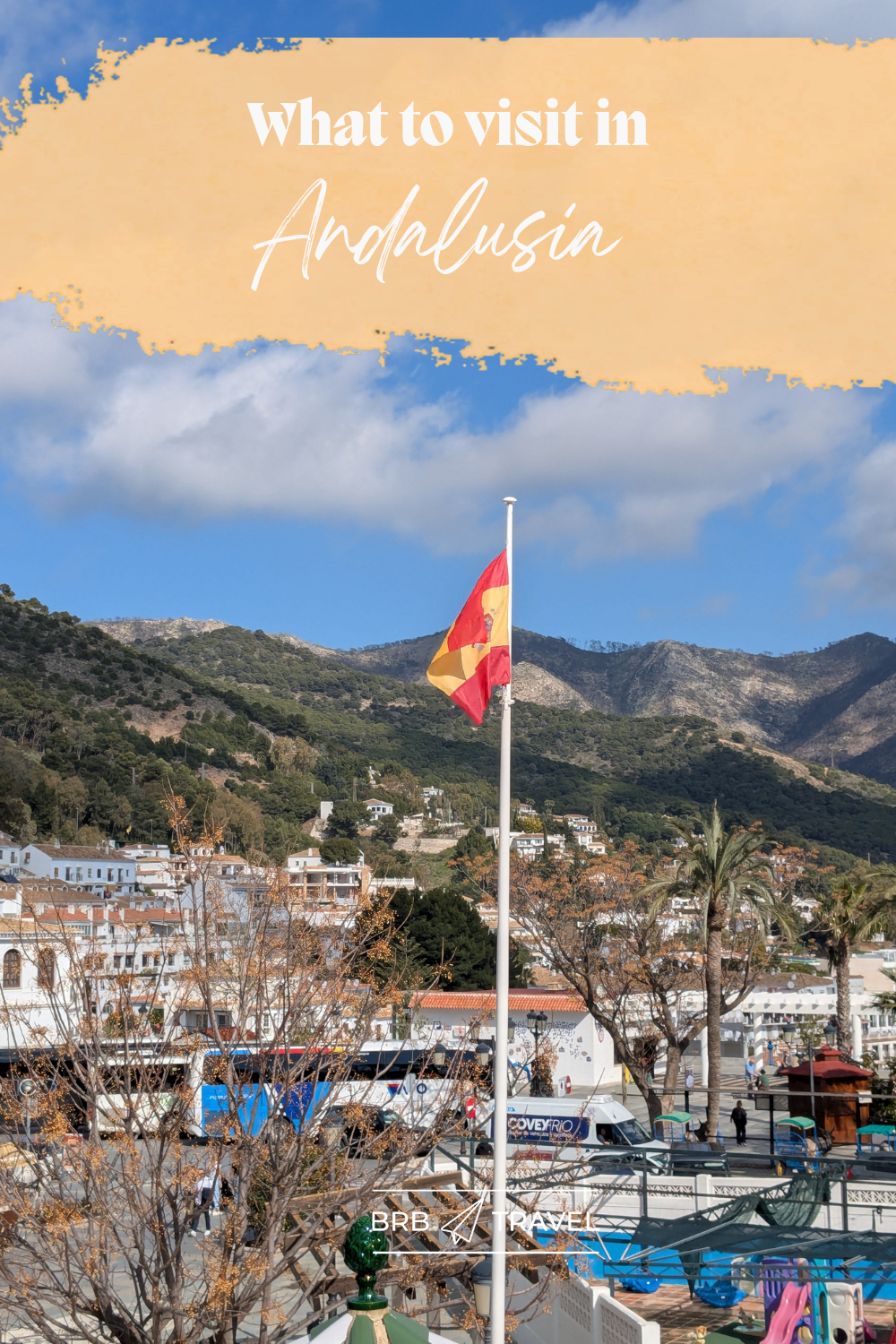
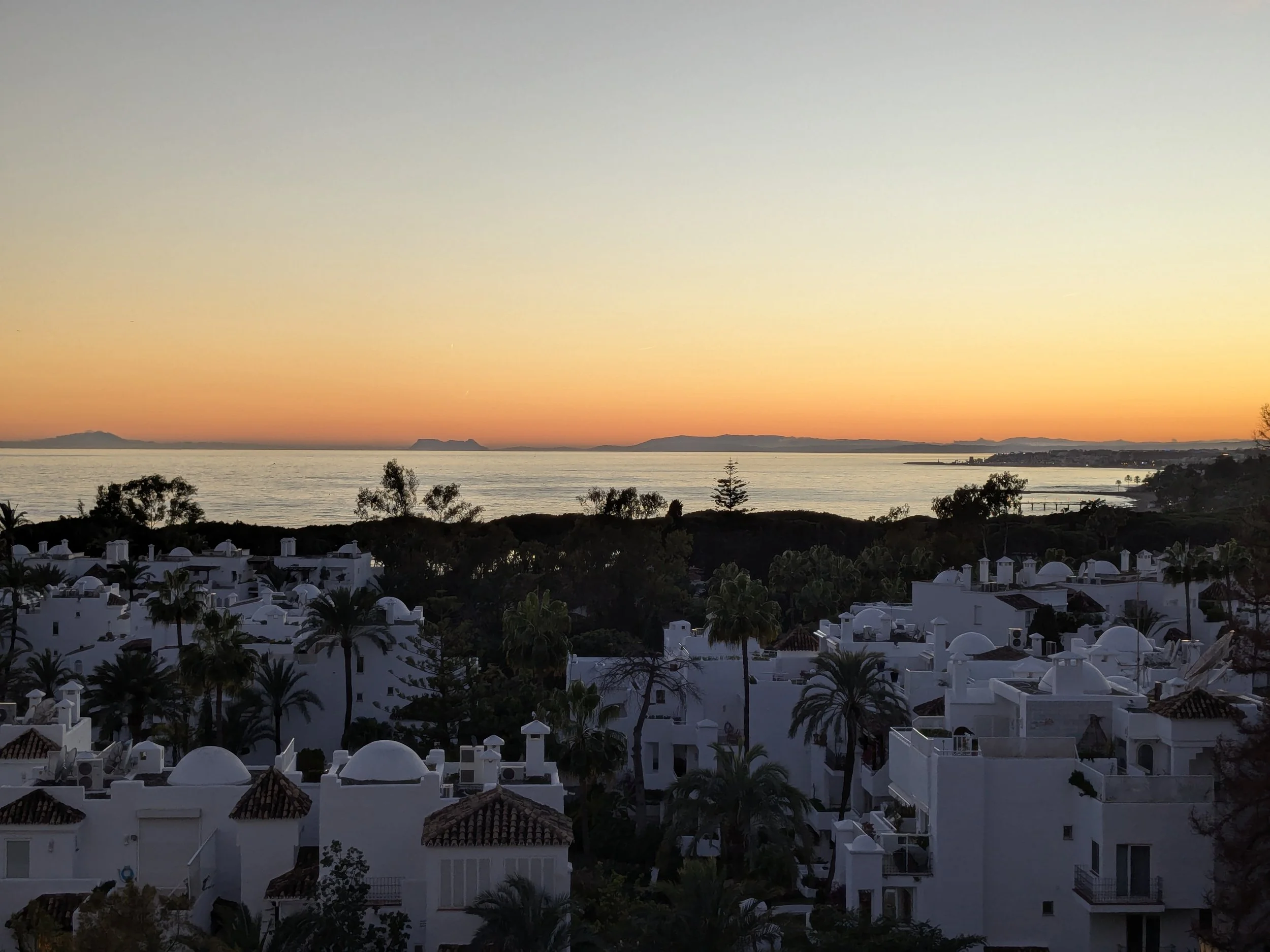
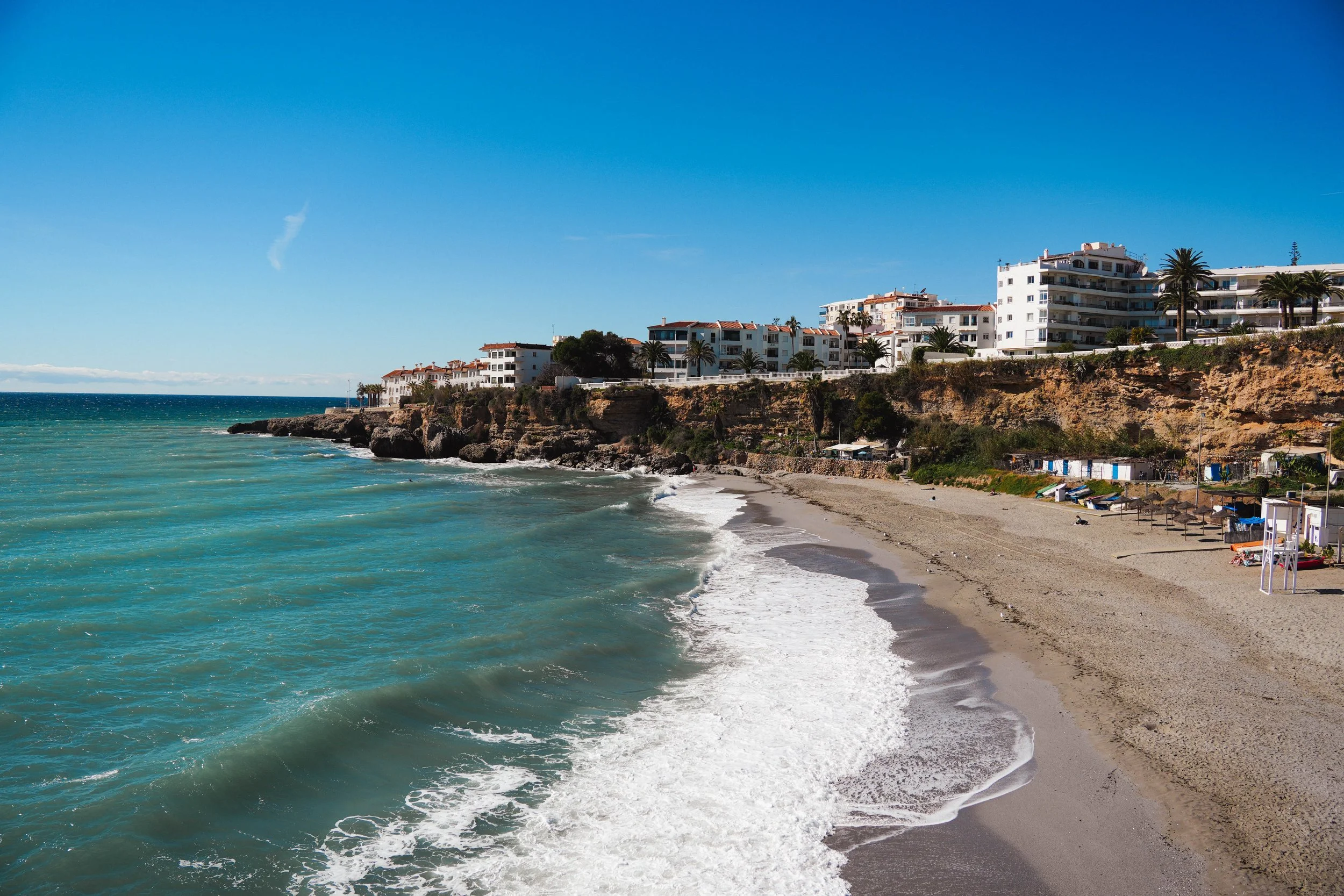


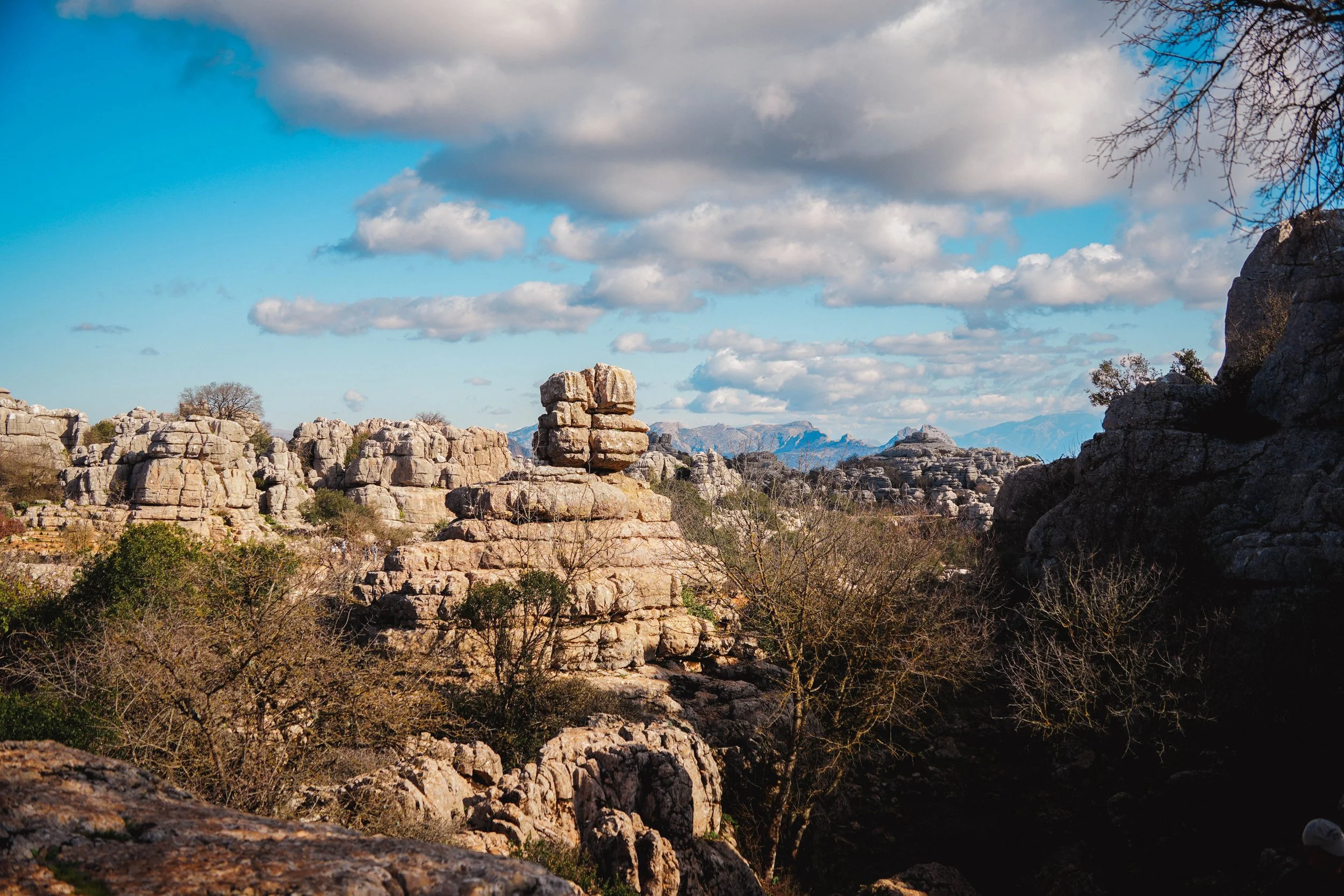
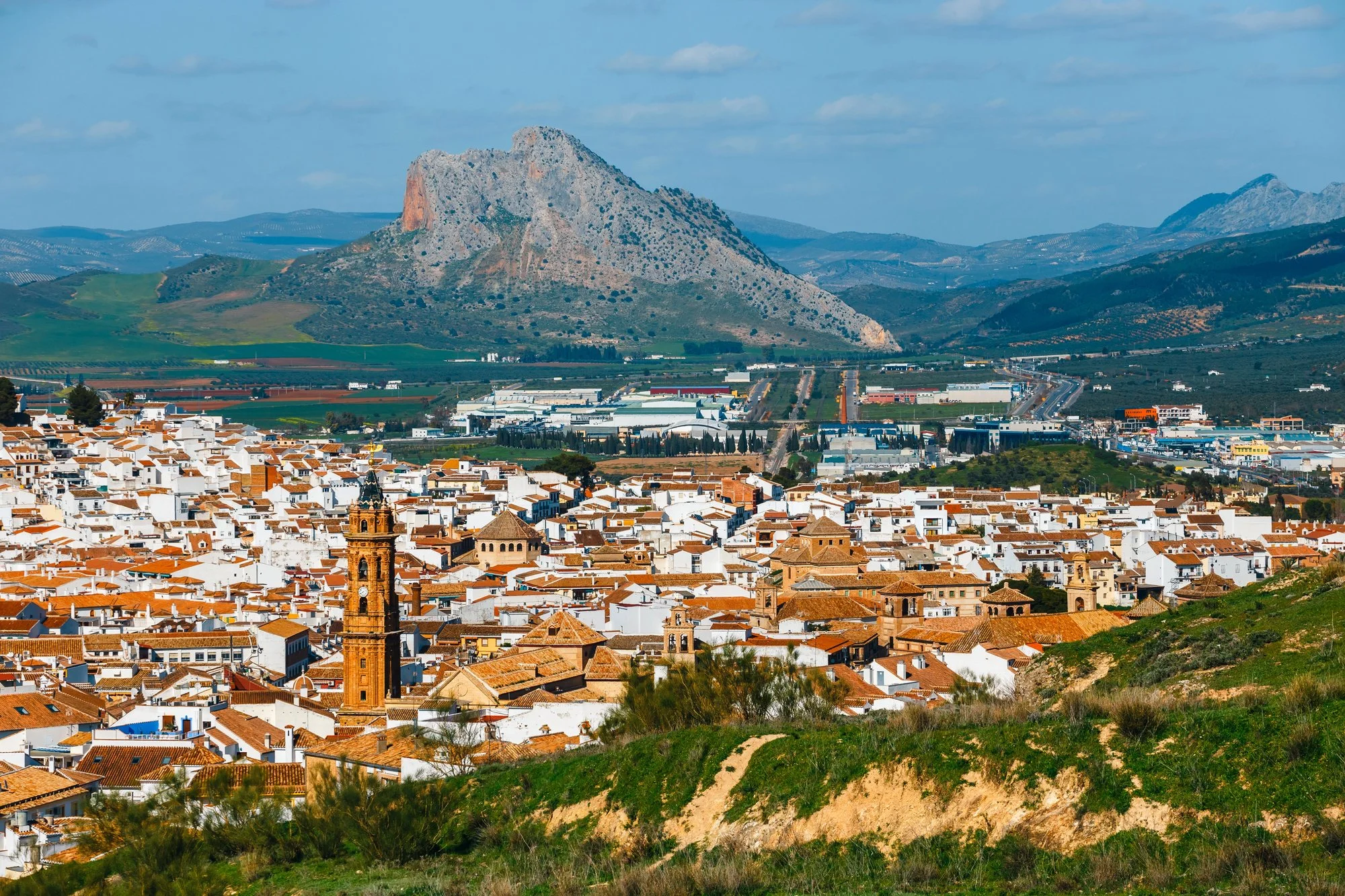
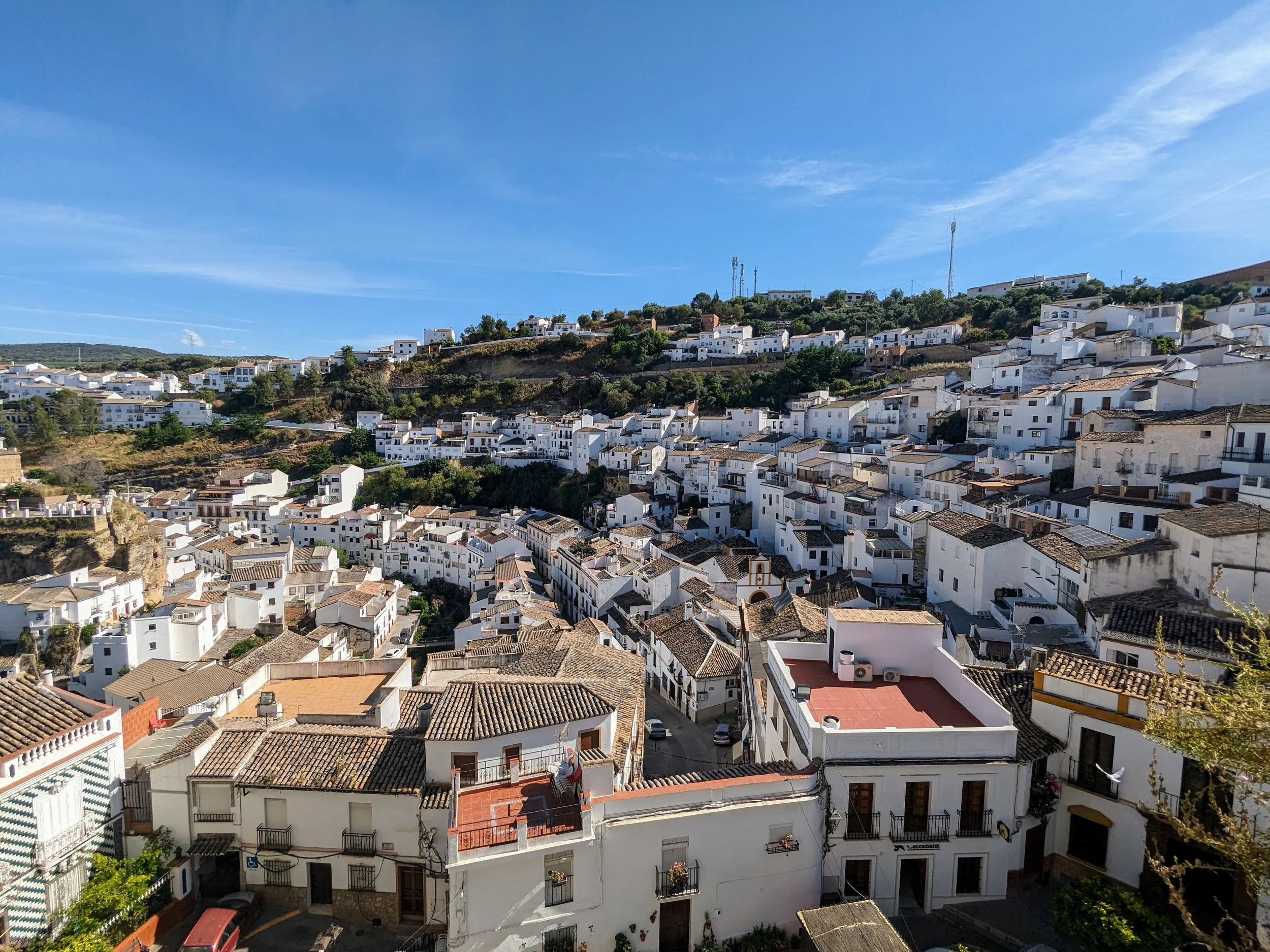





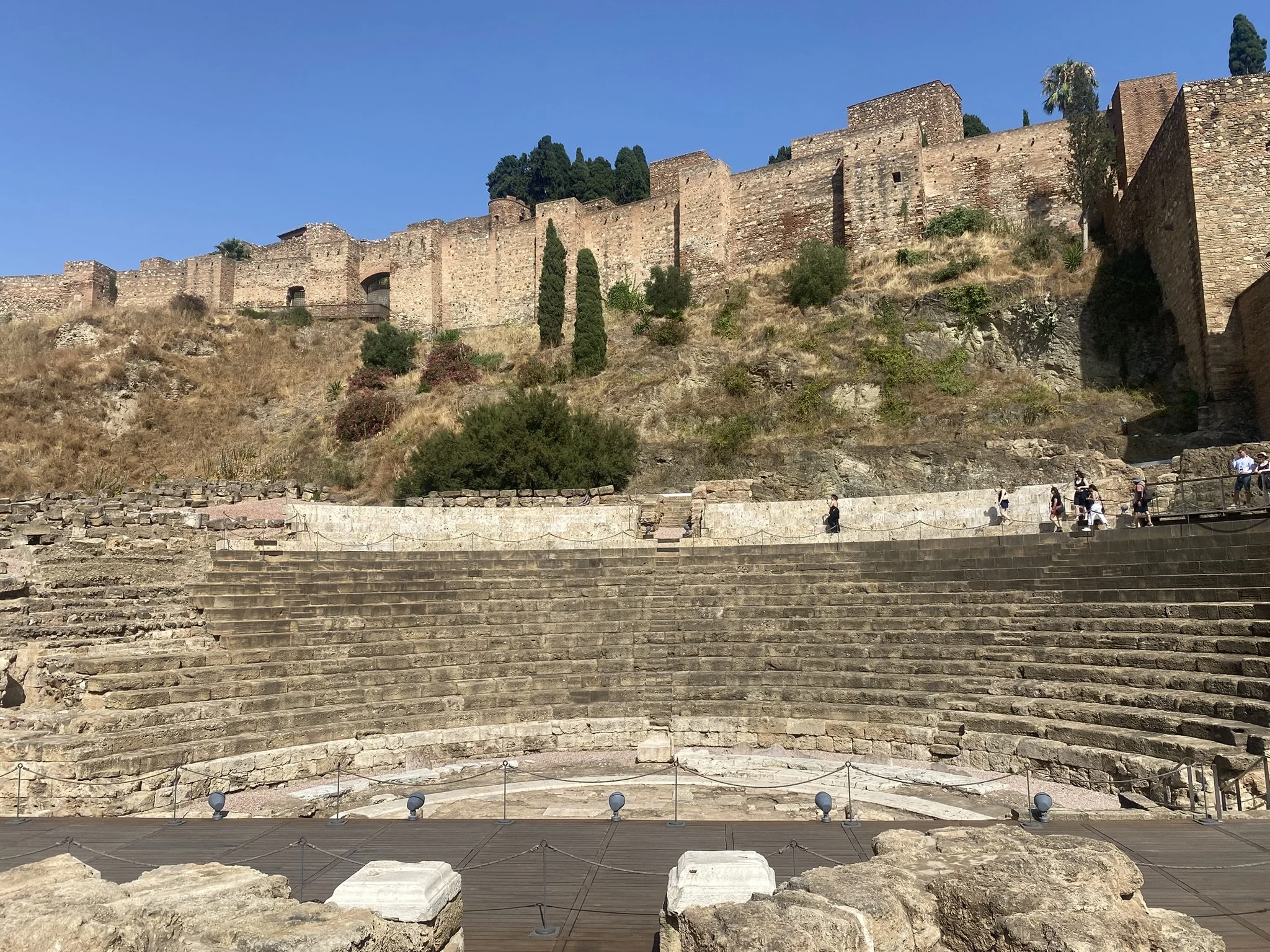


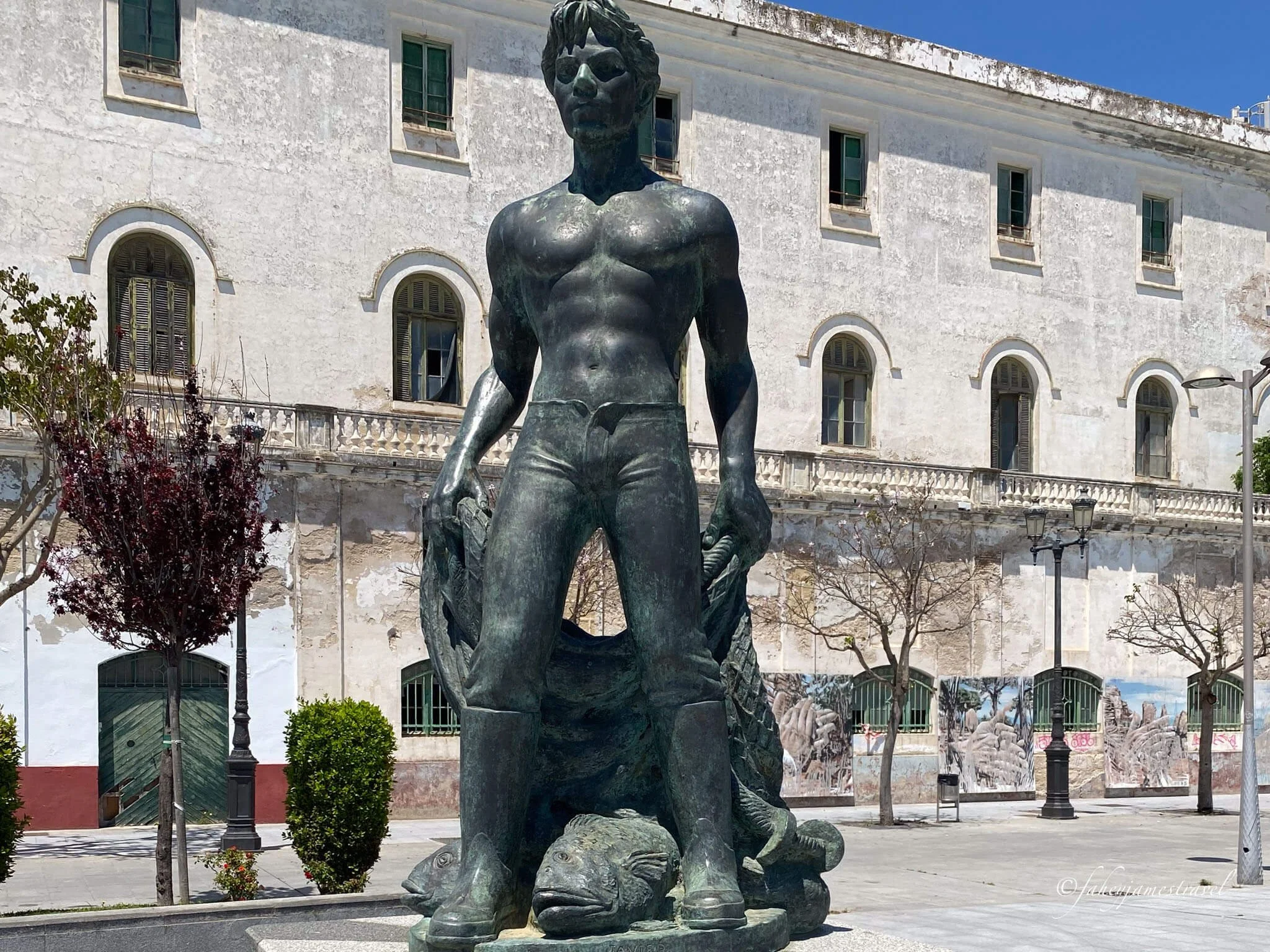
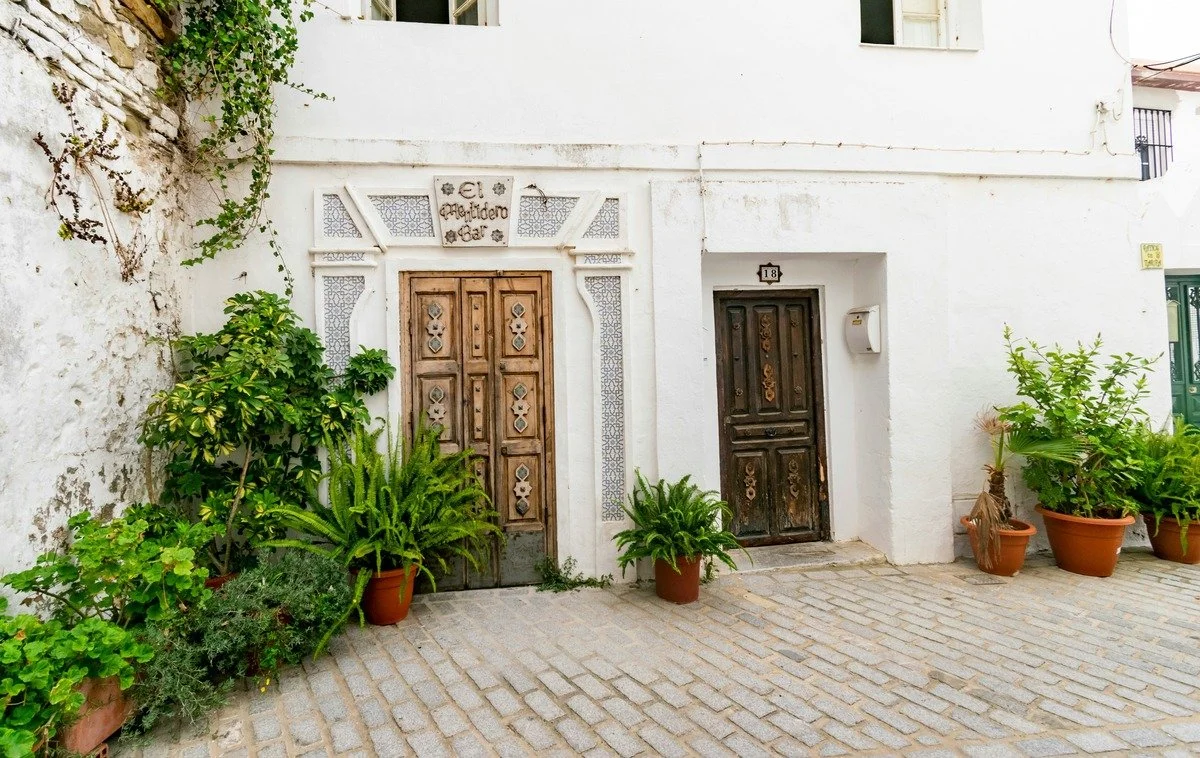
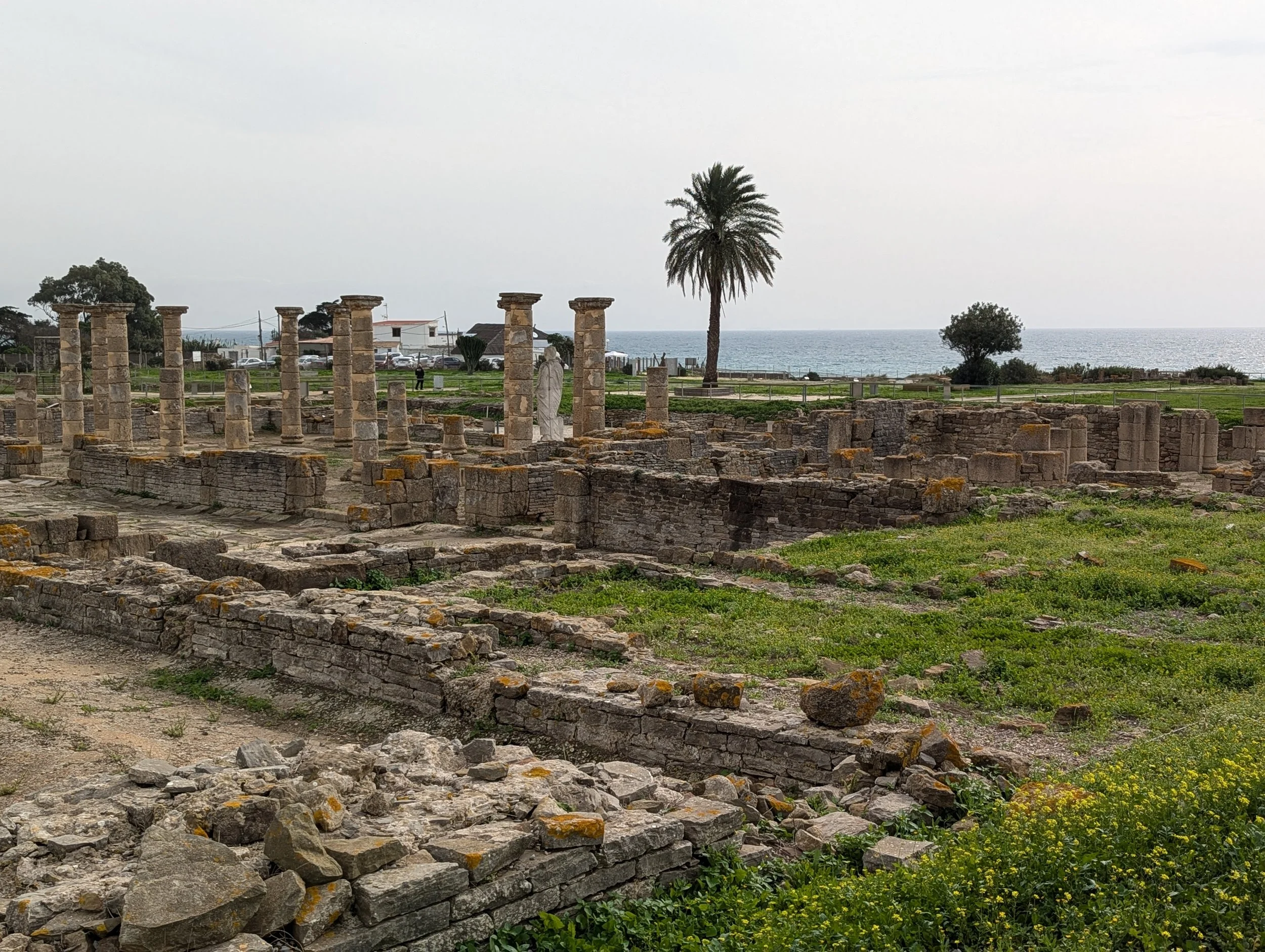
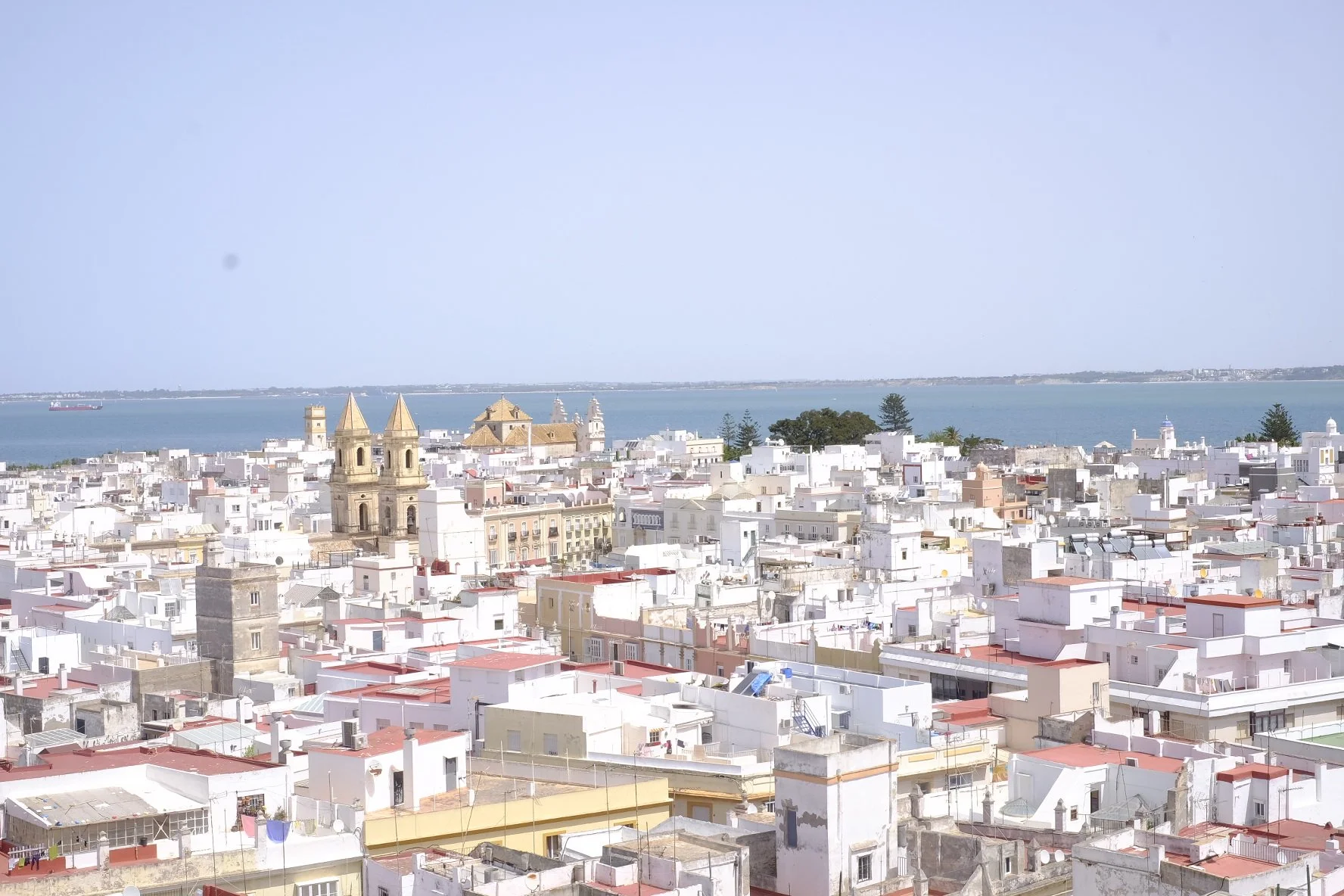
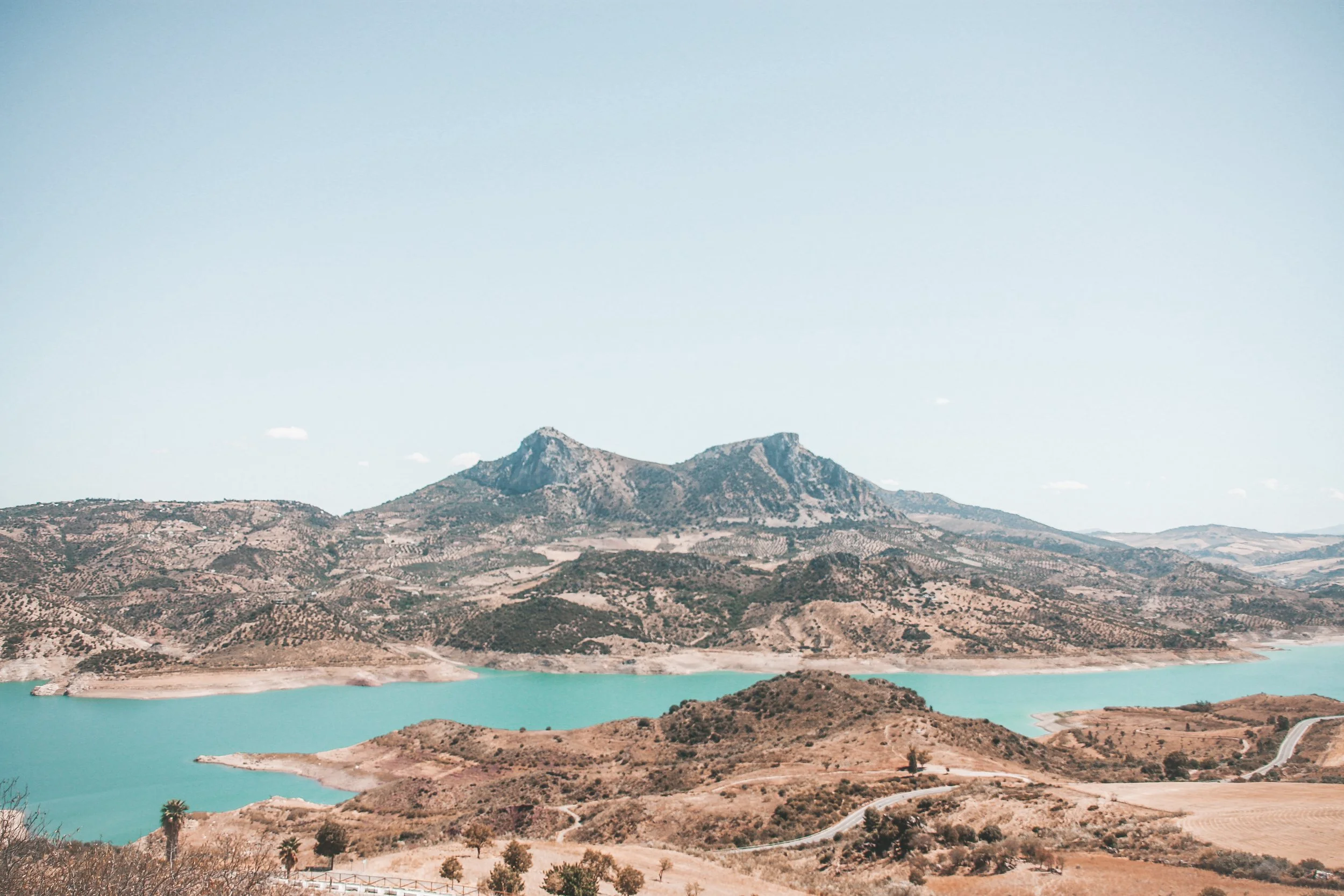

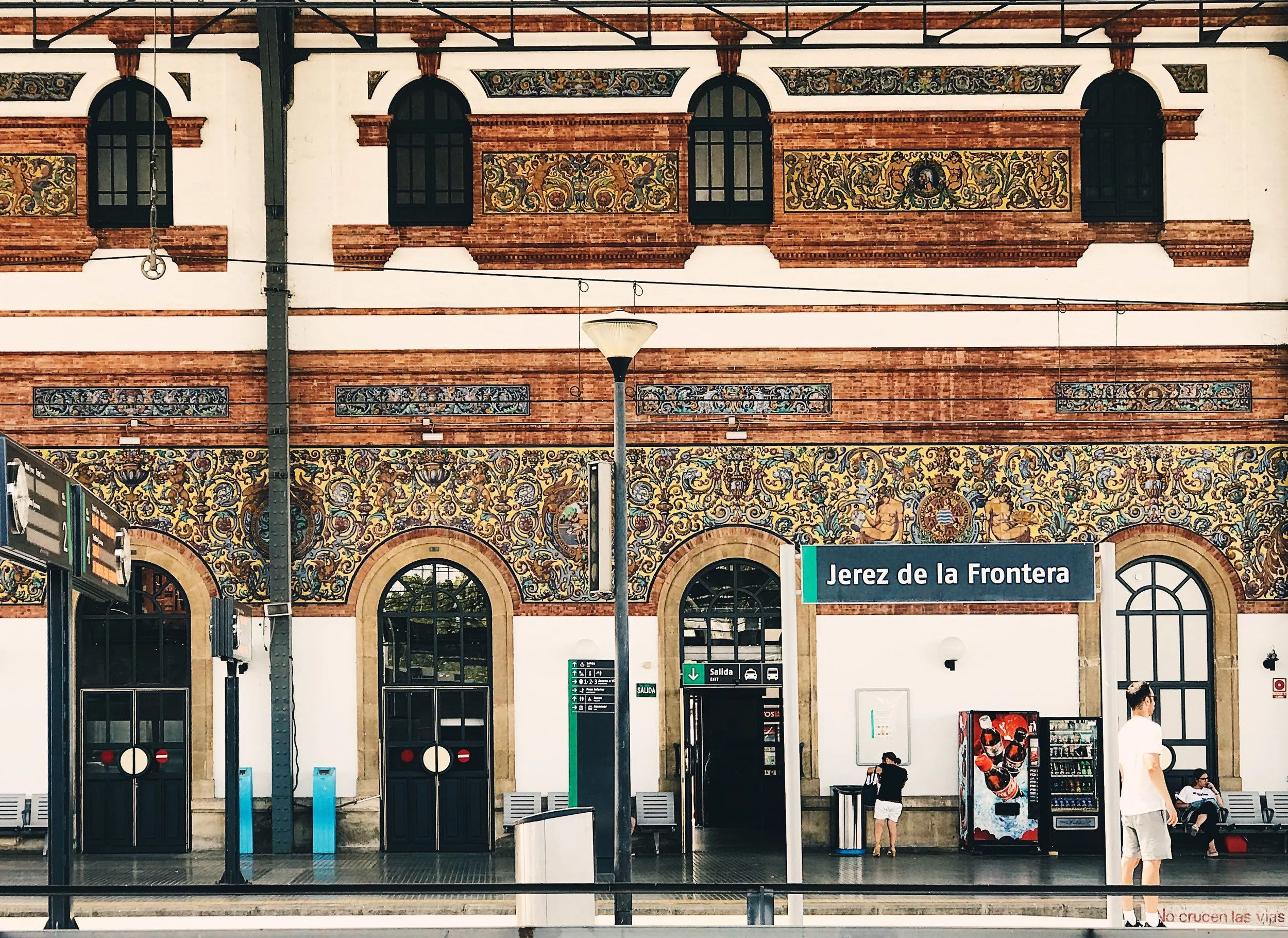


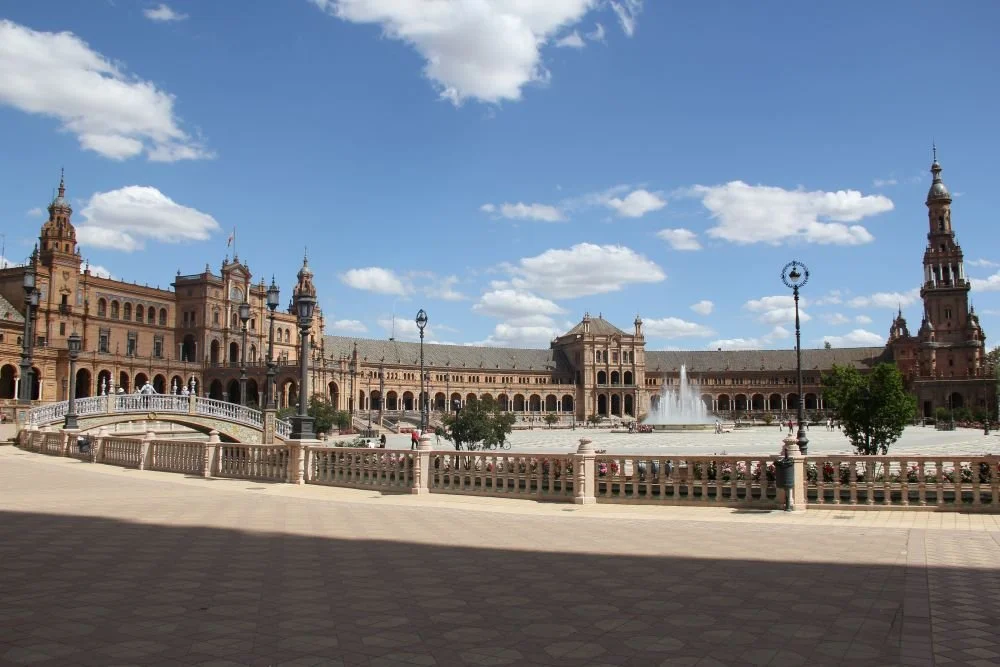
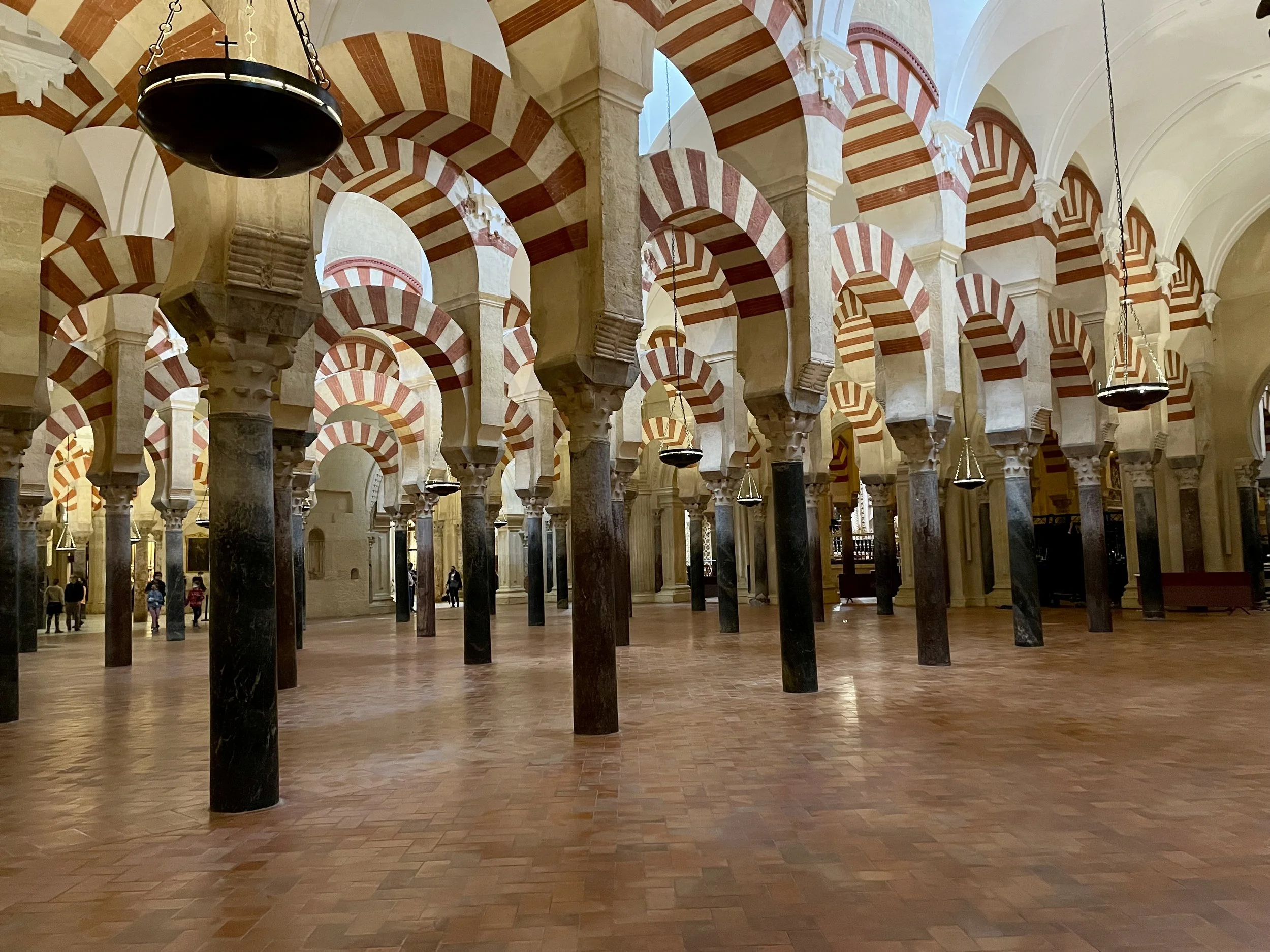
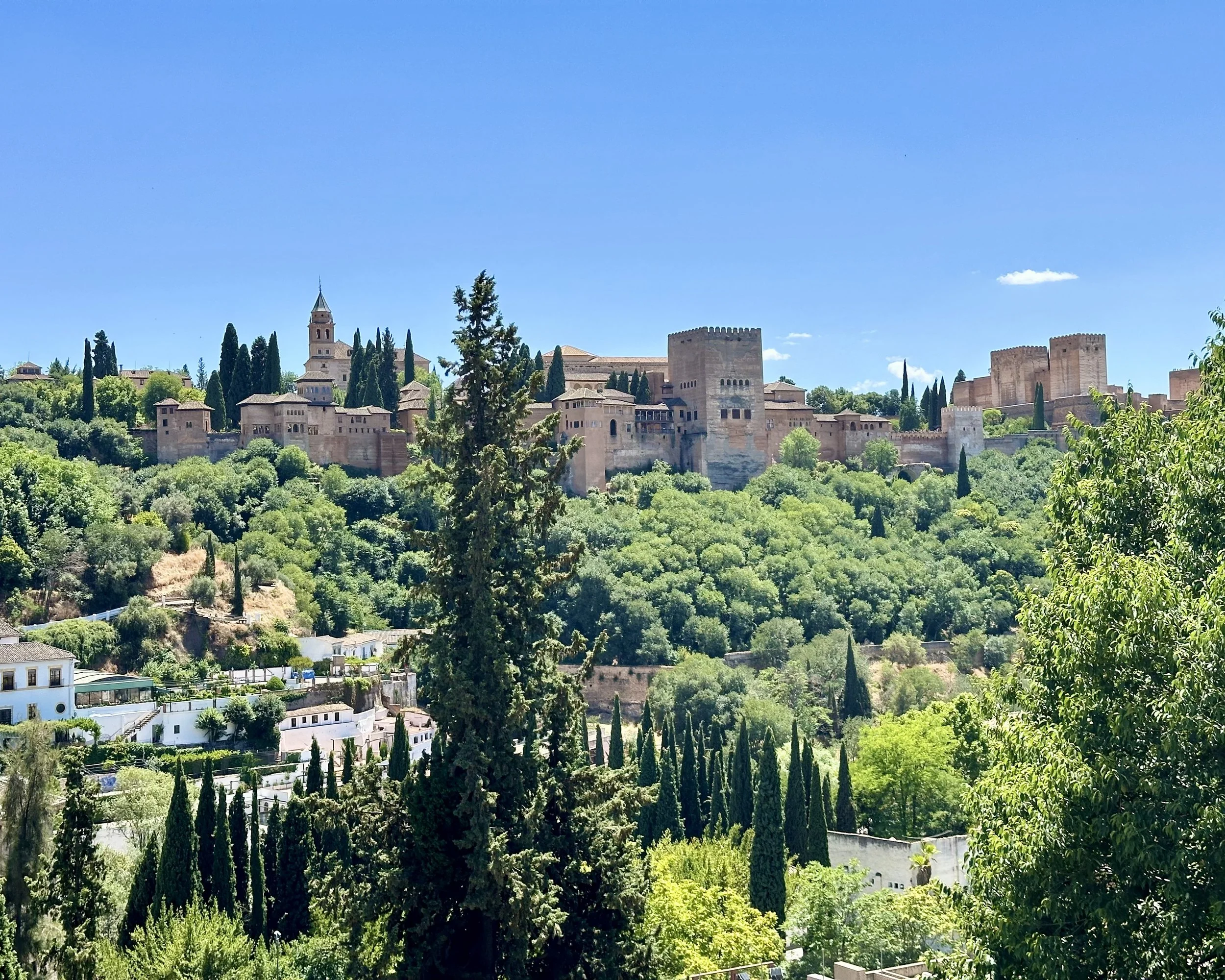


Andalusia stole my heart, and it’ll steal yours too. Explore Marbella’s charming Old Town, Nerja’s cliffside Balcony of Europe, Ronda’s dramatic gorge, and Córdoba’s iconic Mezquita. With whitewashed villages, sun-soaked beaches, flamenco, and delicious Andalusian food, here’s what to visit in Andalusia for an unforgettable trip.